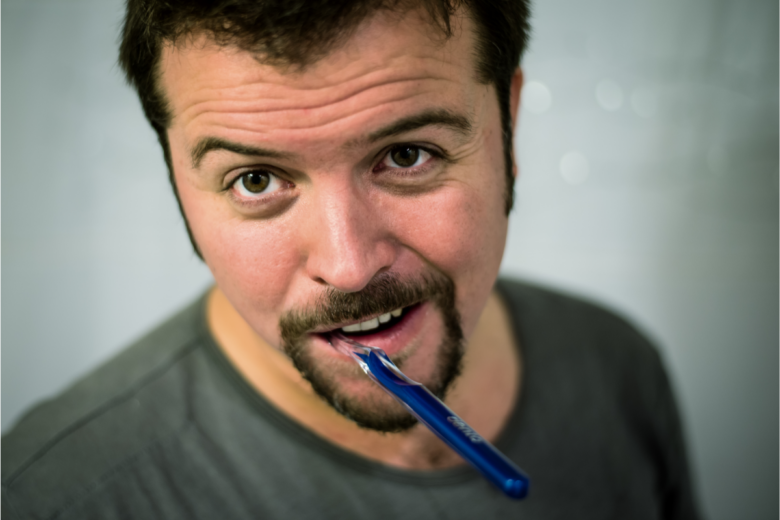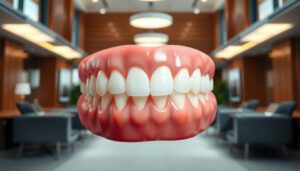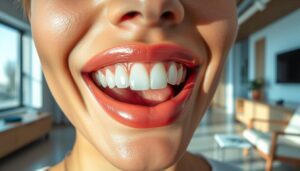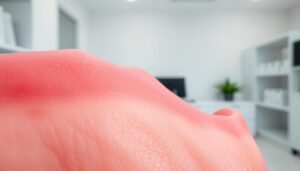Brushing your teeth is one of the most important habits for maintaining good oral health. While it’s easy to assume that brushing is a simple task, many people unknowingly make mistakes that can harm their gums. Healthy gums are essential for keeping your teeth in place and preventing gum disease. In this article, we’ll go over the top 5 mistakes people make when brushing their teeth and how to avoid them to protect your gums.
Mistake #1: Brushing Too Hard
One of the most common mistakes people make when brushing their teeth is using excessive force. It’s natural to think that brushing hard means you’re cleaning better, but this can actually cause more harm than good.
The Impact of Aggressive Brushing on Gums
Brushing too hard can irritate and damage your gums, leading to gum recession, sensitivity, and even bleeding. Over time, aggressive brushing can wear away the protective enamel on your teeth and expose the sensitive dentin underneath.
Proper Brushing Pressure to Avoid Damage
To avoid damaging your gums, you should apply gentle pressure when brushing. Aim to hold your toothbrush with a light grip and let the bristles do the work. Instead of pressing hard, use soft, circular motions to clean your teeth and gums.
Mistake #2: Using the Wrong Toothbrush
Another mistake that many people make is using a toothbrush that’s not suited for their needs. The type of toothbrush you use plays a big role in how effective and gentle your brushing is on your gums.
The Benefits of Choosing the Right Toothbrush
The best toothbrush for your gums is one with soft bristles. Soft bristles are gentle on the gums and effective at cleaning your teeth without causing irritation. Hard or medium bristle toothbrushes can be too abrasive, especially for people with sensitive gums.
Soft vs. Hard Bristles: What’s Best for Your Gums?
While hard bristles may seem more effective at scrubbing your teeth, they are actually too rough for your gums and enamel. Soft-bristled toothbrushes are ideal because they can clean your teeth without causing trauma to your gum line.
Mistake #3: Incorrect Brushing Technique
Many people rush through brushing their teeth or use incorrect techniques that don’t clean their gums properly. Brushing technique is just as important as the amount of pressure you apply.
The Right Motion for Healthy Teeth and Gums
To clean your gums effectively, you should use a gentle, circular motion rather than scrubbing back and forth. This motion ensures that both your teeth and gums are thoroughly cleaned without causing any harm. Holding your toothbrush at a 45-degree angle to your gum line is also key to making sure you’re brushing along the edges of your gums, where plaque can accumulate.
Common Brushing Mistakes to Avoid
Some common mistakes include brushing in a harsh, saw-like motion or simply brushing only the top of your teeth. Don’t forget to brush the fronts, backs, and chewing surfaces of your teeth, as well as along the gum line.
Mistake #4: Not Replacing Your Toothbrush Regularly
Over time, toothbrushes wear out, and when this happens, they become less effective at cleaning your teeth and gums. Keeping your toothbrush too long is a mistake that can harm your gum health.
Why a Worn-Out Toothbrush is Harmful
A worn-out toothbrush with frayed bristles can be harsh on your gums and lead to ineffective cleaning. In addition, bacteria can build up on an old toothbrush, potentially contributing to gum disease and other oral health problems.
When and How to Replace Your Toothbrush for Optimal Gum Health
Experts recommend replacing your toothbrush every 3 to 4 months or sooner if the bristles appear worn or frayed. If you’ve been sick, it’s a good idea to replace your toothbrush to avoid reinfecting yourself with germs.
Mistake #5: Overlooking the Gum Line
The gum line is where your gums meet your teeth, and it’s a common area that people overlook when brushing. Failing to clean this area properly can lead to plaque buildup and gum disease.
Why Cleaning the Gum Line is Crucial for Gum Health
Plaque can accumulate along the gum line, leading to gum inflammation, bleeding, and eventually gum disease if not removed. Properly cleaning this area is essential for maintaining healthy gums.
Tips for Reaching the Gum Line Without Hurting Your Gums
Use a soft-bristled toothbrush and brush at a 45-degree angle along the gum line. Be gentle and avoid scrubbing, as this can cause irritation. If necessary, use a smaller toothbrush or an interdental brush to clean between the teeth and gums.
Brushing your teeth properly is key to maintaining not only a bright smile but also healthy gums. By avoiding these common mistakes, you can help protect your gums from damage, sensitivity, and gum disease. Remember to brush with gentle pressure, use the right toothbrush, follow the proper technique, replace your toothbrush regularly, and clean along the gum line. A little extra care goes a long way in maintaining your oral health.
In addition to proper brushing, it’s essential to complement your oral care routine with regular visits to the dentist for professional cleanings and checkups. These visits help catch any potential issues early, ensuring your gums and teeth remain healthy for years to come. By following the tips outlined in this article and being mindful of your brushing habits, you’ll be well on your way to preventing gum disease, reducing sensitivity, and maintaining a confident, healthy smile. Take care of your gums, and they’ll take care of your teeth, giving you the foundation for long-lasting oral health.




